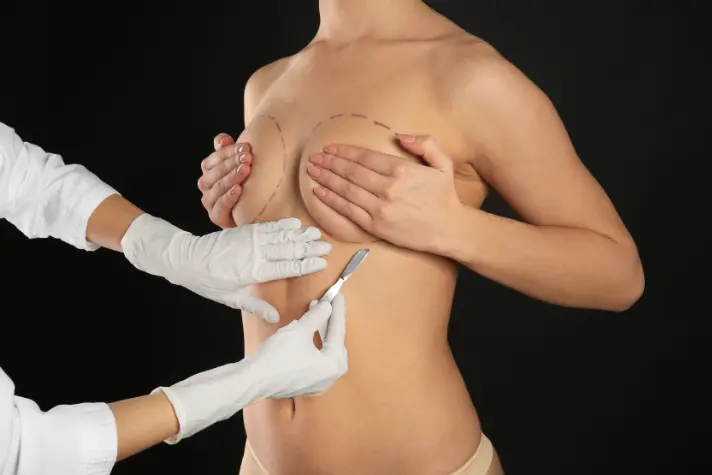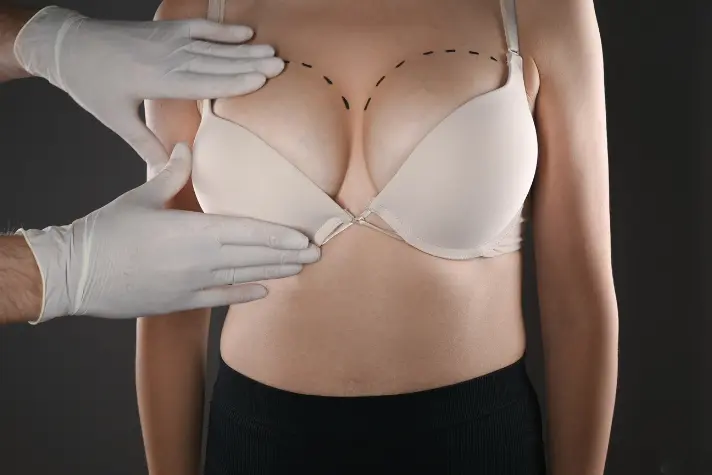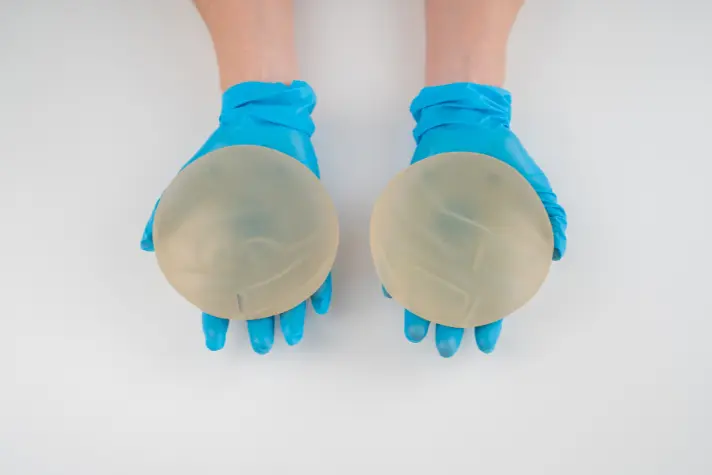
When considering breast augmentation Bellevue, there are several decisions a patient must make before undergoing surgery.
Luckily, patients have their surgeons to help guide them when determining the right path for their surgery. For example, patients need to determine the right type of breast implant, incision location, and the placement of the implant under the muscle or over the muscle.
Patients expect some of these decisions, but implant placement is a particular one that many patients are not equipped to make.
Let’s look into the differences between submuscular vs. subglandular implant placement in breast augmentation.
You may also like:
- Increase Your Breast Size With Augmentation
- Your Breast Augmentation Journey: What You Need to Know
- Combining Augmentation With Breast Reduction: Is it Possible?
Submuscular Implant Placement: Achieving Natural Aesthetics

Submuscular breast implant placement refers to placing the implant under the chest muscle.
However, the implant often sits partially under the muscle rather than completely under it. Regardless, the majority of the implant is underneath the pectoralis major muscle. This is the most common and popular placement for breast augmentation surgeries today. There are many reasons that patients and surgeons prefer submuscular implant placement.
Firstly, it tends to look more natural with rippling and wrinkling unlikely to show through the skin.
In the past when breast implants were not commonly placed below the muscle, it was possible to see the edges of the implant underneath the skin. This was often due to the natural movements of the implants and the stretching of the skin over the implant.
Secondly, arguably the more important reason implants are placed below the muscle is because studies suggest a lower risk of capsular contracture. This complication of breast augmentation – while usually benign – can distort the look of the breast and may cause pain.
Finally, implants placed under the pectoral muscle are unlikely to affect mammograms. Whereas women with implants over the muscle may experience complications with mammography.
Subglandular Implant Placement: Emphasizing Ease and Size

Placing the implants above the muscle – or in the subglandular position – does offer specific advantages that fit certain patients. While no longer the standard placement, there are still times when surgeons will place breast implants over the muscle.
When placed above the muscle, the implant still lays behind the glands and fat of the breast. For patients who already have significant breast tissue, rippling and wrinkling may not be a concern with any breast implant placement, including subglandular placement.
This placement is especially advantageous for patients looking to accommodate larger implants. Sometimes it can be difficult to get large implants adequately under the muscle.
Therefore, placing them above the muscle can provide better results. Additionally, cutting through and lifting the muscle does mean that patients will generally need a longer recovery. It can also be more painful. In comparison, a subglandular breast augmentation recovery is much easier, shorter, and less painful.
Subglandular breast implant placement generally fits specific patient profiles. For example, it is common among weight lifters and bodybuilders because there is no distortion of the implant when flexing the chest muscles.
Whereas with submuscular placement, the breasts can take on a slightly less natural look when flexing. For many women, this is not a concern, but in these specific circumstances, these patients may be good candidates for subglandular breast augmentation.
Considerations for Each Placement Option: Making an Informed Decision

As alluded to earlier, the recovery for each placement option can slightly vary. While patients tend to tolerate both well and neither is too painful when compared to other plastic surgeries, there is no question that subglandular breast augmentation results in an easier and less painful recovery.
However, patients will need to be careful not to split open their incisions and to not progress to wearing normal bras too quickly as this can more easily distort implants placed over the muscle.
The most notable difference submuscular breast augmentation presents during recovery is the presence of chest tightness as the muscle heals.
Each placement can reduce the risk of certain complications. Below is a roundup of which placement may have lower rates of certain complications.
Submuscular Placement:
- Fewer instances of capsular contracture
- Unlikely to ripple or wrinkle
- Less likely to interfere with mammograms
Subglandular Placement:
- Less likely to distort under muscle tension
- Simpler breast revisions
Submuscular implant placement by far provides the most natural-looking results in most patients.
However, it is especially recommended for women with small breasts and thin builds. Women who do not want possible distortion when flexing the chest muscle or those who have significant breast tissue already may see good results from subglandular placement.
Most tend to believe that subglandular placement results in less natural-looking results.
Submuscular vs. Subglandular Implant Placement in Breast Augmentation. Which Is Right for You?
Ultimately, the decision of whether to seek submuscular or subglandular placement is a personal choice. Several factors like lifestyle, medical history, and existing anatomy can all impact a patient’s decision. It is best for patients to consider their lifestyle, preferences, and desired outcomes when choosing between subglandular and submuscular breast augmentation.
Most surgeons will prefer and recommend submuscular breast implant placement simply because it comes with fewer risks overall.
However, every patient is unique and there are cases where subglandular breast augmentation may be ideal or recommended. It is important to discuss this thoroughly with your surgeon during a consultation.
Conclusion:
Submuscular and subglandular implant placements both come with advantages and disadvantages. Some are aesthetic such as muscle distortion or rippling; while others are more serious like how submuscular placement has lower capsular contracture rates.
The right choice for each patient will depend on factors unique to that patient. The best way to find out is to consult with a plastic surgeon to discuss their preferences, medical history, and lifestyle to determine the right placement for their needs.
About The Author:
Stacey Smith is a freelance health writer. She is passionate about writing about women’s health, dental health, diabetes, endocrinology, and nutrition and provides in-depth features on the latest in health news for medical clinics and health magazines.




